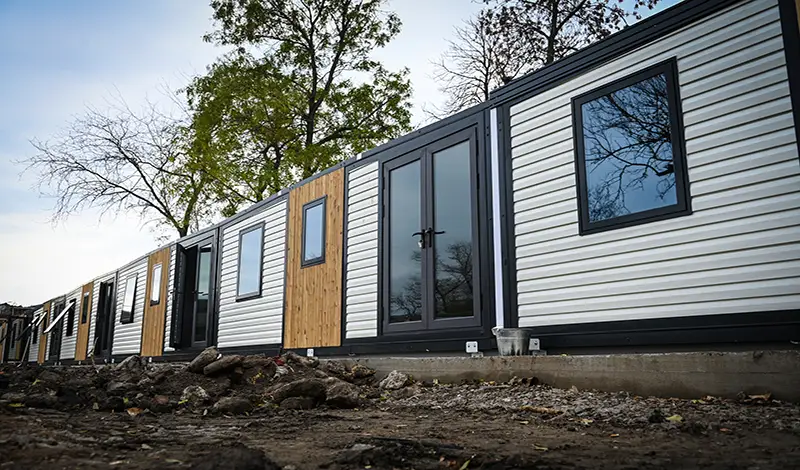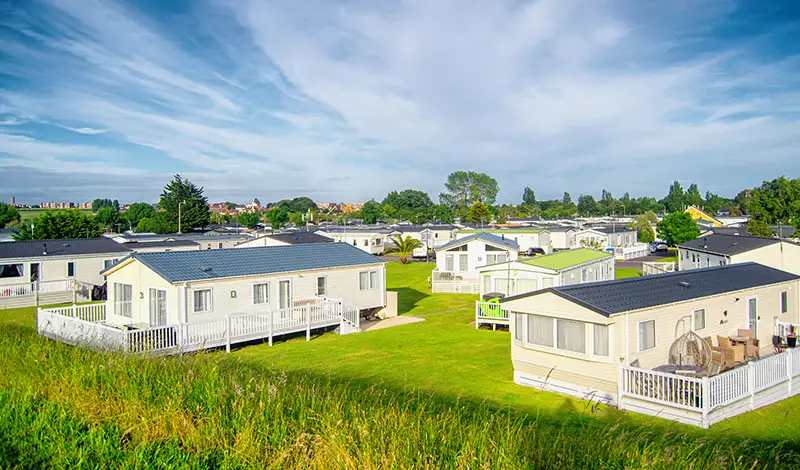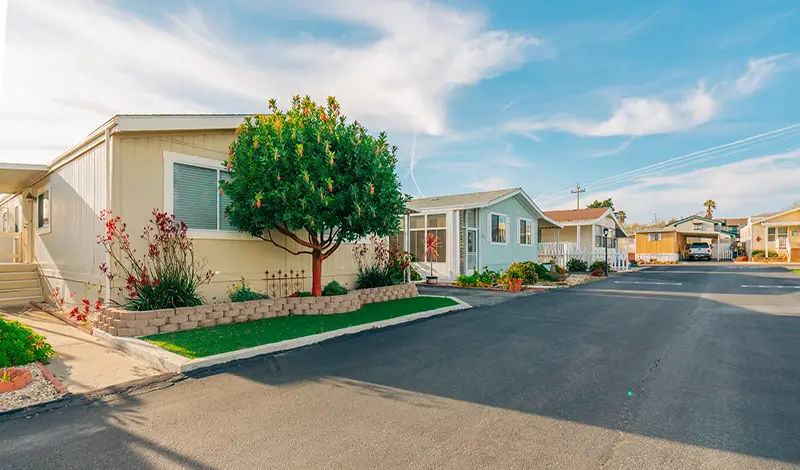Manufactured, Modular, and Mobile Home: What is the Difference?
Published on July 29, 2024 | 6 Minute read

Melanie
Ortiz Reyes
Content Specialist
When it comes to non-traditional housing, terms like manufactured, modular, and mobile homes are often used interchangeably, leading to confusion. However, these three types of homes have distinct characteristics, construction methods, and legal definitions.

Manufactured Homes
Manufactured homes, often referred to as mobile homes, are built entirely in a factory setting and then transported to the site where they will be occupied. The term "manufactured home" came into use after 1976, when the National Mobile Home Construction and Safety Act was replaced by the Manufactured Home Construction and Safety Standards (HUD Code), which imposed stricter building codes and standards for these types of homes.
Construction and Features
Manufactured homes are built on a permanent steel chassis and transported to their location on wheels. They must adhere to the HUD Code, which sets standards for design, construction, strength, durability, transportability, fire resistance, and energy efficiency. The HUD Code also includes performance standards for the heating, plumbing, air conditioning, thermal, and electrical systems.
Manufactured homes can come in various sizes and configurations, including single-wide, double-wide, and even triple-wide units. They are typically more affordable than traditional site-built homes, making them an attractive option for budget-conscious buyers. Modern manufactured homes often feature high-quality materials and can include amenities such as energy-efficient appliances, high-end finishes, and open floor plans.
Advantages and Disadvantages
One of the primary advantages of manufactured homes is their affordability. The factory-built process allows for cost savings through bulk purchasing of materials and efficient construction methods. Additionally, manufactured homes can be installed quickly, reducing the time needed to move into a new home.
However, there are some disadvantages to consider. Manufactured homes may have a stigma attached to them, and their value may depreciate over time, similar to vehicles. Financing can also be more challenging to secure for manufactured homes compared to traditional homes, as they are often classified as personal property rather than real estate.

Modular Homes
Modular homes are also built in a factory setting, but they differ significantly from manufactured homes in terms of construction and regulations. Modular homes are constructed in sections or modules, which are then transported to the home site and assembled on a permanent foundation. They must adhere to local, state, and regional building codes rather than the federal HUD Code.
Construction and Features
The construction process for modular homes involves building sections or modules in a factory, with each module typically consisting of multiple rooms or parts of rooms. Once completed, these modules are transported to the home site and assembled using cranes. The modular construction process allows for greater customization and flexibility in design compared to manufactured homes.
Because modular homes must meet local building codes, they are often indistinguishable from traditional site-built homes once completed. They can be built to various architectural styles and sizes, and they often include high-quality materials and finishes. Additionally, modular homes are known for their energy efficiency and durability, as the factory-controlled environment ensures precise construction and reduced waste.
Advantages and Disadvantages
Modular homes offer several advantages, including faster construction times and high-quality craftsmanship. The factory-built process reduces the risk of weather-related delays and allows for more precise construction. Modular homes are typically more energy-efficient and environmentally friendly than traditional site-built homes.
One potential disadvantage of modular homes is that they can be more expensive upfront than manufactured homes. However, the long-term benefits, such as increased energy efficiency and potential for higher resale value, can offset the initial cost. Financing for modular homes is also generally easier to secure, as they are classified as real estate and can be financed with traditional mortgage loans.

Mobile Homes
The term "mobile home" is often used interchangeably with "manufactured home," but there are distinct differences based on the age and construction standards of the homes. Mobile homes refer specifically to factory-built homes constructed before 1976, when the HUD Code was established.
Construction and Features
Mobile homes were built using less stringent standards than those imposed by the HUD Code for manufactured homes. As a result, they may not meet the same safety, durability, and energy efficiency standards. Mobile homes were typically constructed on a steel chassis and transported to the home site on wheels.
While many mobile homes were designed to be mobile and easily relocated, their construction quality and features varied widely. Older mobile homes may lack modern amenities and may not meet current safety standards. However, many mobile homes have been upgraded or renovated over the years to improve their livability and safety.
Advantages and Disadvantages
One of the primary advantages of mobile homes is their affordability. They were often used as a cost-effective housing solution, particularly in rural areas. However, the lower construction standards and potential for depreciation over time are significant disadvantages. Mobile homes may also face challenges with financing and insurance, as they may not meet current building codes or safety standards.

Key Differences and Considerations
Building Standards
- Manufactured Homes: Built to the HUD Code, which sets national standards for design, construction, and safety.
- Modular Homes: Built to local, state, and regional building codes, similar to traditional site-built homes.
- Mobile Homes: Built before the HUD Code was established, using less stringent standards.
Construction and Assembly
- Manufactured Homes: Built entirely in a factory and transported on a steel chassis.
- Modular Homes: Built in sections or modules in a factory and assembled on a permanent foundation.
- Mobile Homes: Built in a factory and transported on a steel chassis, typically designed for mobility.
Cost and Financing
- Manufactured Homes: Generally more affordable but may face challenges with financing and depreciation.
- Modular Homes: Higher upfront cost but better financing options and potential for higher resale value.
- Mobile Homes: Affordable but may have limited financing options and lower construction standards.
Customization and Design
- Manufactured Homes: Limited customization options, though modern versions offer more flexibility and higher-quality materials.
- Modular Homes: Greater customization and flexibility in design, often indistinguishable from traditional site-built homes.
- Mobile Homes: Varied construction quality and features, with older models potentially lacking modern amenities.
Understanding the differences between manufactured, modular, and mobile homes is crucial for making an informed decision when considering non-traditional housing options. Each type of home offers unique advantages and disadvantages, and the right choice will depend on individual needs, budget, and preferences.
Manufactured homes provide an affordable and efficient housing solution, adhering to national standards for safety and construction. Modular homes offer greater customization and quality, meeting local building codes and providing a long-term investment. Mobile homes, while affordable, may come with challenges related to construction standards and financing.
By carefully considering the distinctions and benefits of each type of home, buyers can make a well-informed decision that meets their lifestyle and housing needs. Whether opting for a manufactured, modular, or mobile home, the goal is to find a comfortable, safe, and suitable living environment that aligns with personal preferences and financial considerations.